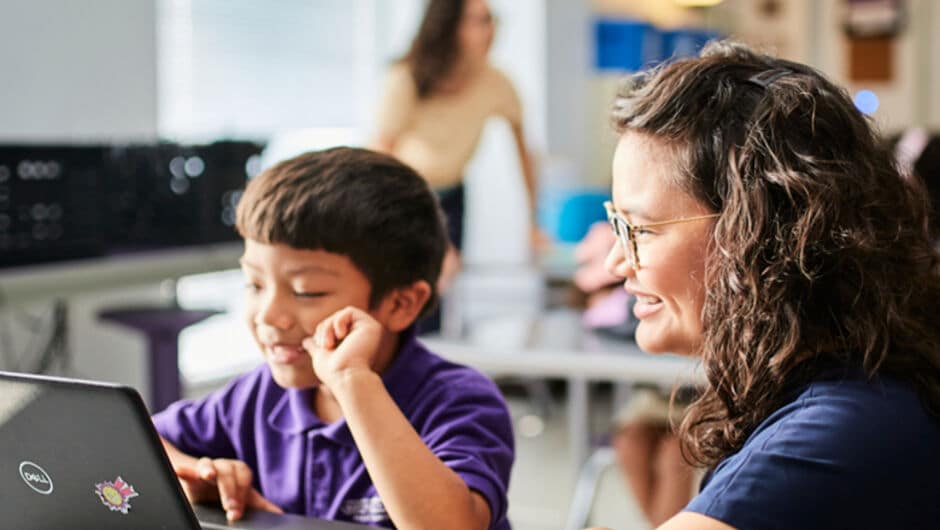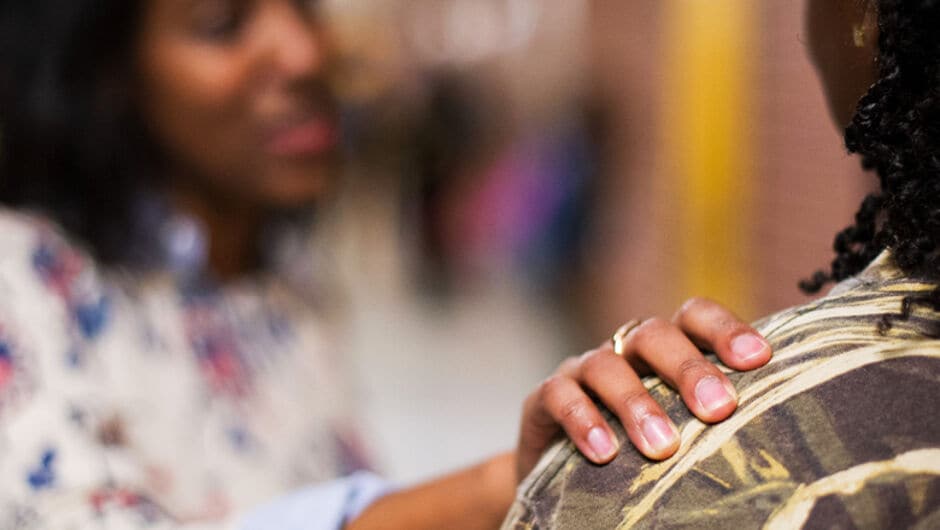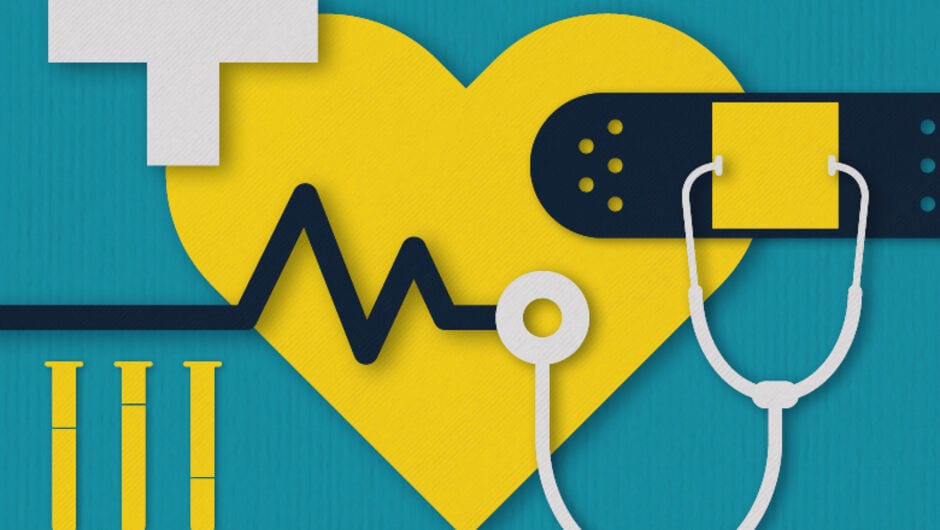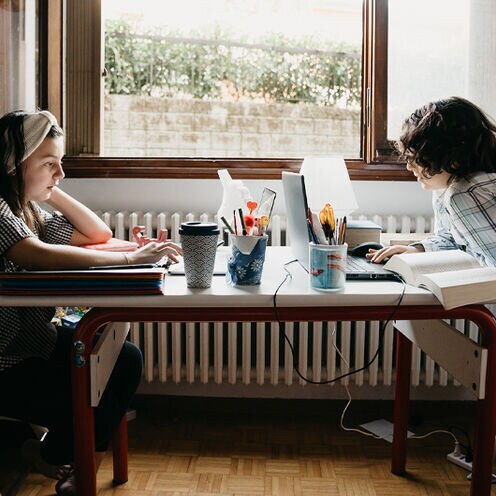
What Homeless Students Lose When Schools Go Digital
New York City’s COVID-19 school closures had major ramifications for the city’s more than 100,000 homeless and foster students. What will the long-term impact be on their education?
Broome Street Academy is a high school unlike any other in New York.
It is the only high school in the state to reserve half of its seats for students who are homeless, vulnerably housed, or in the foster system. It is also the only high school in the state that is embedded within a human services nonprofit, not the other way around. Its parent nonprofit, The Door, provides primary care, mental health, job training, college prep, and immigration-related legal representation to children ages 12 to 24—all under the same roof as Broome Street Academy.
These critical services are fully baked into the average day of a Broome Street student, accessible at any time. It seems like the ideal suite of supports for vulnerable children who lack access to health professionals, healthy meals, and stability.
The only problem is that the students of Broome Street Academy have been unable to access many of these valuable resources for months, all as a result of COVID-19 school closures and shelter-in-place orders.
Youth Homelessness in New York City and Beyond
This is a problem for a shockingly large number of students across the five boroughs. Approximately one out of 10 students in the New York City public school system lack stable housing.
Even before COVID-19, academic outcomes—including standardized test scores and graduation rates—were consistently lower for students in New York City who have experienced homelessness, according to the Institute for Children, Poverty & Homelessness (ICPH).
This is due to a number of factors caused or exacerbated by housing instability, including frequent school transfers and chronic absenteeism.
Now, during the coronavirus pandemic, homeless students in New York City and across the country are forced to navigate all of those existing issues on top of the conundrum of sheltering in place without shelter. Many homeless students are without the web-enabled devices or internet access needed to keep up with virtual learning and stay connected with counselors, despite the city’s pledge to provide devices for all students who need one. Others are stuck in traumatic and dangerous living situations, where school and classwork is the last thing on their mind.
What’s happening in New York City is happening across the nation. 1.5 million public school students experienced homelessness in the 2017-2018 school year, the highest number in over a decade.
It is important to recognize that student homelessness encompasses many different types of living situations, according Dr. Elizabeth Bowen, an assistant professor at the University at Buffalo and the faculty expert on homelessness.
A student may be living with a family or guardian, but the entire family unit is homeless, staying at a shelter, in transitional housing, or doubling up with another household. Or, they may have left their family of origin for safety reasons, and may be sleeping outside, staying in their car, or couchsurfing. All of these living situations come with their own safety risk factors and disruptions to education, especially during the pandemic.
“You already have a population that is very much marginalized, very much at risk,” Dr. Bowen says. “Then you add in this very unpredictable, chaotic environment that now all of us are in with COVID-19.”
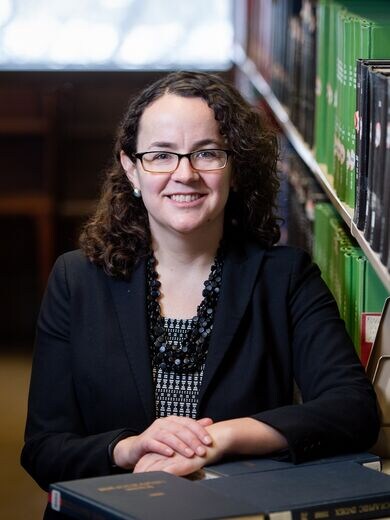
This chaotic environment has tremendous academic implications for homeless students, many of whom rely on school for overall stability and normalcy, as well as services. Nationally, students who have experienced homelessness are 87 percent more likely to drop out of school compared to their stably housed peers. Without a high school diploma, they are more likely to experience homelessness again as young adults, perpetuating the cycle of poverty.
“We don't have the research yet on how homeless and vulnerable youth are doing with remote learning, but I would expect that it's extremely difficult,” Dr. Bowen says. “Education is disrupted for all students right now. But some students have supportive adults in their lives, and have the financial resource to help them overcome those disruptions. Many people in the homeless youth population do not have that.”
While it is too early to know the exact impacts COVID-19 will have on homeless students’ academic outcomes, it is likely that it will only exacerbate these disparities, both nationally and for students in New York City.
“All of the things that make the lives of our kids fragile, those were issues that were active before COVID,” says Eric Weingartner (New York ‘92), the CEO of Broome Street Academy. “Whether it's violence in the home, alcohol/drug abuse, mental health issues, exacerbated financial issues because parents or caregivers have lost jobs. COVID just makes it all worse.”
For these students, the school building isn’t just a place where they learn. It’s where they gain access to important wrap-around services and resources. It’s a place of stability for students who crave predictable schedules and healthy relationships with peers and trusted adults.
Educators, families, and community leaders alike are deeply concerned that New York City’s most vulnerable homeless and foster students are at risk of losing hard-won academic gains and even dropping out of school entirely—especially if schools remain closed this fall.
How One School Helped Homeless Students Transition to Virtual Learning
Eric made the call to close Broome Street Academy over a week before New York City Mayor Bill DeBlasio’s announcement closing schools citywide in March. Eric knew the students of Broome Street Academy, already so accustomed to instability in their lives, needed and deserved the advanced warning.
“We weren’t waiting until the very last minute to let children know that there was a possibility that we would have to transition quickly to remote learning,” Eric says.
Each student was given a computer to take home for accessing the school’s online platform, Edgenuity. The curriculum is the same as before the pandemic, and students are responsible for completing five classes a day on the remote learning platform. Thanks to these supports and constant communication with parents and guardians, the majority of students at Broome Street Academy have been logging on for digital learning daily.
Some of The Door’s services were also smoothly transitioned online for students. For example, between a third and a half of the students Broome Street Academy have maintained regular contact from their social workers and guidance counselors throughout the pandemic. The school was able to push many of its extracurriculars, like art and recreation classes, online as well.
However, many of the services that Broome Street Academy’s students rely on the most simply can’t be replicated in a virtual space.
“In many cases, direct services are just hard to do and replace online. Some services just don't translate,” Eric says. “We have a huge health center that's embedded in The Door, and we do primary care and reproductive health care. We did a consultative dentist appointment the other day. You can do that, but if you have a real oral problem, you still need to go to a dentist.”
“As you can imagine, none of this is ideal,” he adds. “If anybody tells you that you're able to do as much virtually as you can in person, it's just not true.”
What Happens When Homeless Students Lack Access to Service During COVID-19
Unfortunately, not all homeless students are able to access programs like The Door and Broome Street Academy. In fact, in many neighborhoods across the city, there are few if any programs to help connect homeless youth with the care and services they need, including nutrition, health, and counseling services.
One of the communities in New York City that has struggled the most with student homelessness and COVID-19 is Harlem, where Pierre Gooding (New York ‘06) works as an attorney and helped operate the Rendall Memorial Presbyterian Bed Stabilization Program, a homeless shelter. Through this work, Pierre has seen first hand how hard the coronavirus is devastating under-resourced communities like his.
“The interruptions in school have a huge effect on many kids in terms of safety and getting daily meals,” Pierre says. “There are few, if any, current day programs for homeless persons in Harlem, so families and children have nowhere to go. Pictures of individuals piling into shelter buildings have been on the news.”
Overcrowding in homeless shelters has been a gravely serious health concern for the city, though Pierre's program did not face this problem during the pandemic. The coronavirus has run rampant in packed homeless shelters in New York City, leading to dozens of deaths and forcing homeless families to choose between shelter and social distancing. For homeless students, it can be next to impossible to focus on achieving in school in these conditions.
“If safety is a concern, you can imagine what it's like to try to complete a homework assignment when you have those overarching concerns. We want students to be able to focus on their learning as opposed to all these external issues,” Pierre says. “There's just a huge discrepancy between those that were able to switch paths seamlessly when this thing hit and those that were caught without remote learning devices, without homes, and a place to get meals on a daily basis."
Pierre hopes that COVID-19 is the wake-up call the city needed to set policies into motion that recognize and address the numerous obstacles that homeless students face—especially after losing critical classroom time to COVID-19.
"I hope that from a policy perspective, especially in these times, we take what we know from this crisis and incorporate it into future policies,” Pierre says. “Whether that's funding for remote learning devices or prioritizing our homeless populations and ensuring that we have wraparound services and day programs in the community.”
“You're talking about 100,000 students,” he adds. “It breaks my heart that those children, through no fault of their own, can't get what they need.”
Supporting NYC’s Most Vulnerable Students Through the Summer and Beyond
In the end, the students of Broome Street Academy were able to successfully finish the end of the spring semester online in late June. It was an incredible accomplishment for a cohort of students who had to overcome so many obstacles on top of the difficulties of virtual learning.
But the future remains uncertain for what school will look like in fall.
“We're planning for a few scenarios,” Eric says. “We're planning for everybody's back in the building. We're planning for nobody's back in the building, and we're planning for an in-between where we're either going to school in cohorts where it's Day A and Day B, or we're trying to spread students out.”
So much hinges upon the city’s reopening plans—not just for Broome Street Academy’s students, but for all students experiencing homelessness in New York City who rely on education and wraparound services to break the cycle of poverty and homelessness.
“I couldn't tell you as of today exactly what's going to happen in the fall because I don't know,” he adds. “The longer we're away, the harder it will be to protect our kids.”
Sign up to receive articles like this in your inbox!
Thanks for signing up!
Content is loading...



